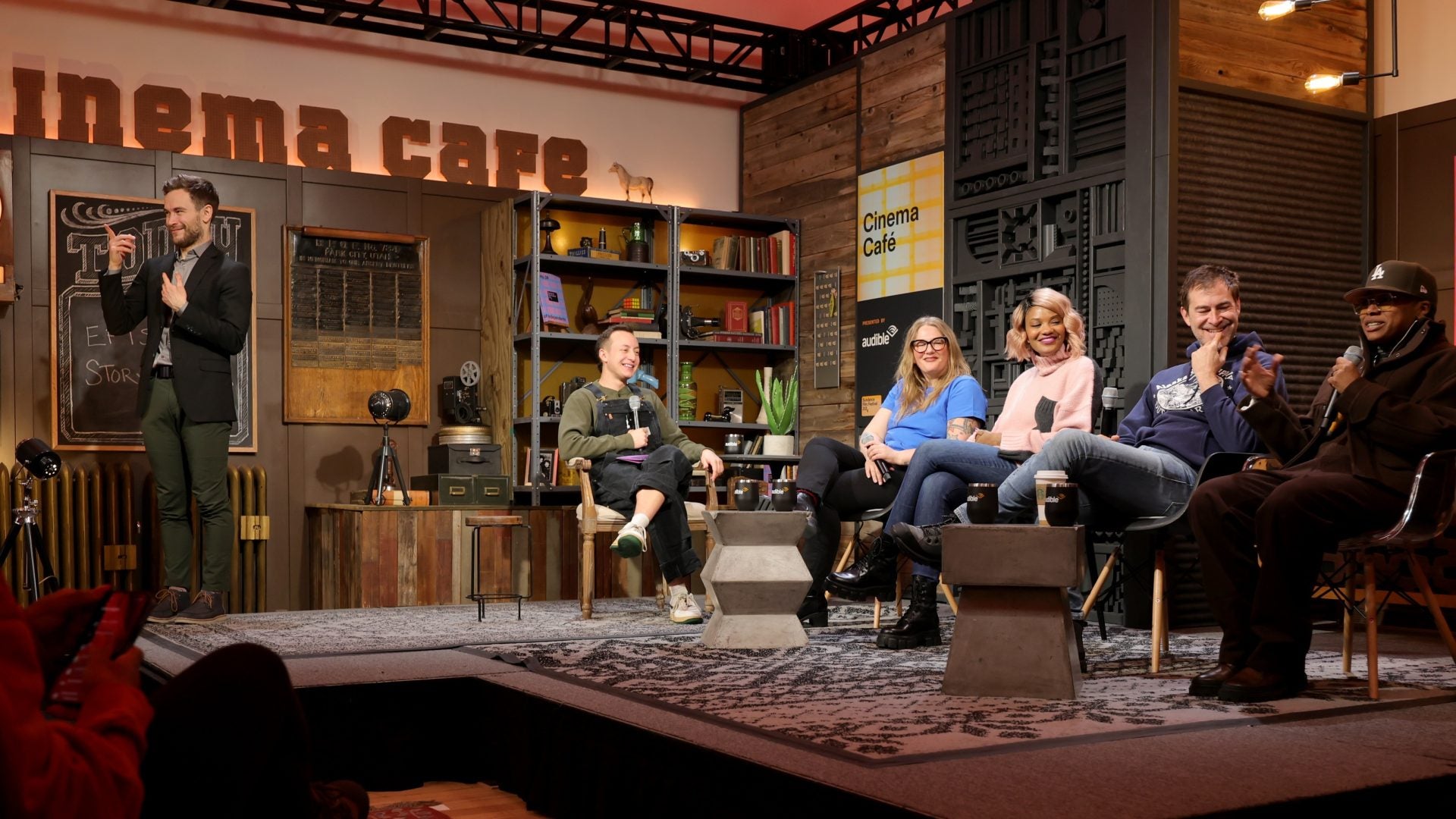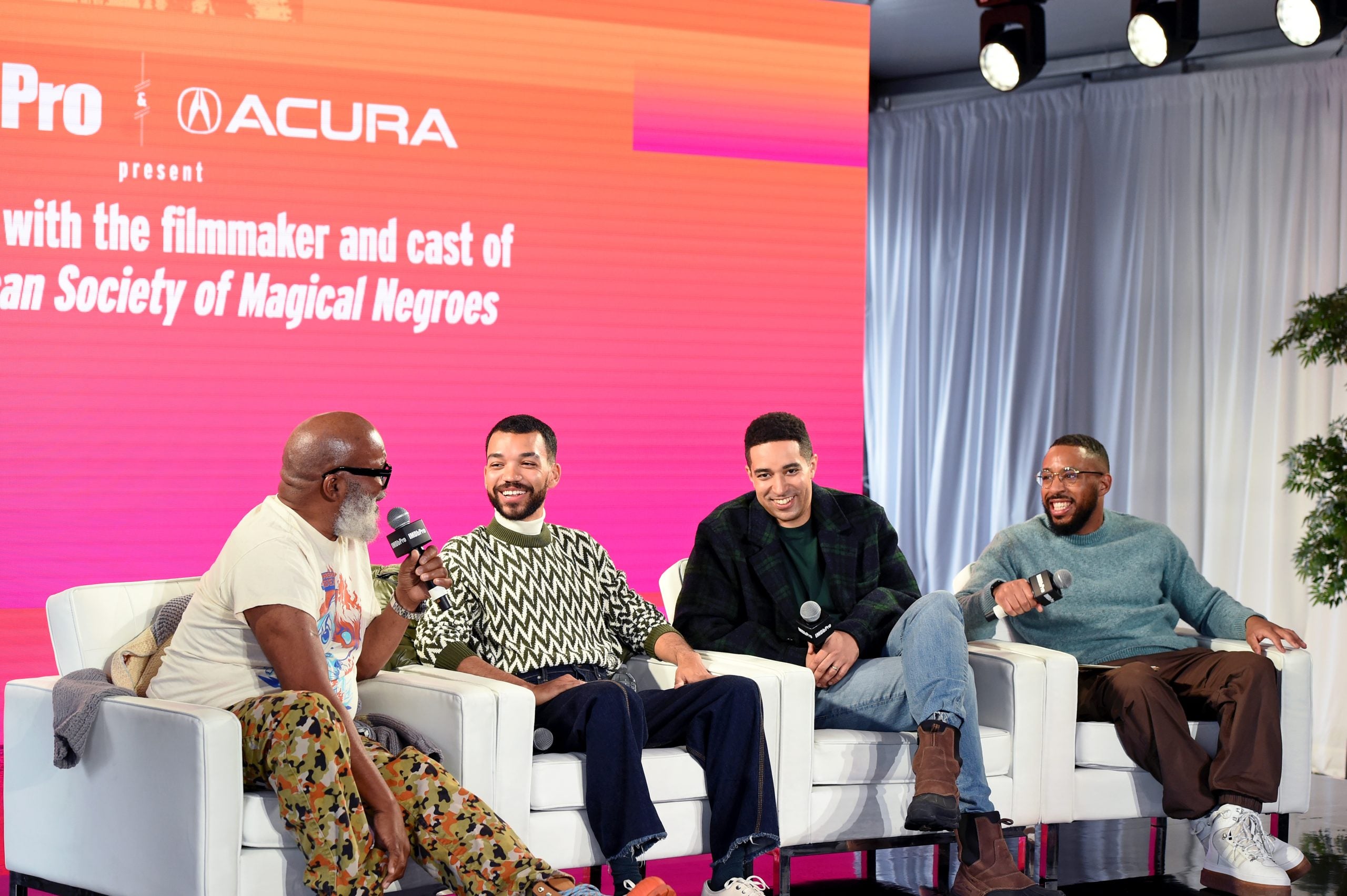
Expectations were high for the Sundance Institute’s 40th film festival, which comes to a close on Jan. 28. Its ambitious slate promised an exciting cinematic experience, including projects that challenge the confines of film, art, and storytelling. Some of the content screened at the festival rose to the occasion, while others fell flat. Of the former category, here are five films worth checking out in 2024.
The American Society of Magical Negroes
On the surface, The American Society for Magical Negroes seems like Black Harry Potter. It is that—expect body-less hands that scrub the bathrooms and candles that do a whole lot more than provide extra lighting (plus, a sympathetic hero who takes on revolutionizing a mystical world)—but it’s also so much more. Following a young, biracial man (played by the incomparable Justice Smith) who joins a society of magical negroes who have committed their lives to making white peoples’ lives easier, as means to protect Black people.
Magical Negroes is one of the more controversial films coming out of Sundance, and its criticisms are warranted. There are layers to the conversation the film aims to inspire about the realities of being Black in a world shaped by white fragility that are missed. But peeling back every layer of that nuanced conversation is an impossible task, and director Kobi Libii does manage to address aspects of Blackness and white fragility that have not been explored in film. And he does so creatively, authentically, and oftentimes with levity viewers, especially Black viewers, will appreciate. Ignore the chatter on Black Twitter and give Magical Negroes a shot.

Freaky Tales
Receiving its title from Oakland rapper Too Short’s 1987 hit of the same name, Freaky Tales is a love letter to the Bay Area in the 1980s. The film follows four different intertwined tales involving Nazi skinheads, aspiring rappers, angsty teen punks, basketball stars, and a hitman, all driven by an omnipresent force. Freaky Tales is clearly a passion project for its co-directors Ryan Fleck and Anna Boden, who are both Bay area natives. Freaky Tales pays homage to a world that no longer exists, as well as its wonderfully weird, underdog inhabitants. Those inhabitants are portrayed by a mix of big names in Hollywood, like Jay Ellis and Pedro Pascal, and more unknown faces, like Ji-Young Yoo and Jack Champion. Everyone brings their A-game, even singer Normani, who makes a small, but charming cameo in the film. As does the late great Angus Cloud—his eerily appearance proves what a promising talent he was. With a soundtrack that most 80’s R&B and hip-hop fans will worship, Freaky Tales is fresh, innovative and a surprising rollercoaster ride that will have you whooping and hollering from start to finish.
Frida
Traditional documentaries examine a subject through available information, archival footage, and testimonies from individuals and experts. Frida challenges that expectation. Retelling the life of Mexican painter Frida Kahlo, Frida is as passionate, vivacious and contemporary as the object of its affection. Instead of using external sources to tell Kahlo’s life, Frida director Carla Gutierrez chooses to let the painter tell her own story. When she was alive, Kahlo kept extensive diaries chronicling her life—those words, as well as essays, letters, and interviews, are Frida’s vehicle, brought to life by voice actress Fernanda Echevarría del Rivero, who captures Kahlo’s wild spirit with ease. Gutierrez’s secondary and tertiary storytelling tools are color and animation, the latter used to emphasize Kahlo’s evocative work. Kahlo’s life and work have been unpacked many times since her 1954 death. If Kahlo were alive today, Frida would likely be one of the sole projects about her life she’d approve of.
Luther: Never Too Much
Luther Vandross’ impact on music is undeniably enormous, and fans have been craving a documentary about the singer’s life and work for decades—Vandross’ family has too. But getting it right was crucial, and boy, does Luther: Never Too Much get it right. Director Dawn Porter is the perfect person to tell Vandross’ story. She and her dedicated team were given access to Sony Music’s incredible archival footage of Vandross rehearsals and performances, which are beautifully integrated into the documentary, alongside commentary from his closest collaborators, friends and family, and artists who attribute his achievements to their own careers. Porter makes sure to include Vandross’ beloved hits, and the music he created for other artists, showing off his prowess as a vocalist, songwriter, composer and producer. It’s triumphant, and everything Vandross fans would want from a documentary about his life.
But that’s not the most commendable about Luther. It’s the way in which his personal life was portrayed that catapults the documentary to brilliance. Vandross’ weight struggles were crucified in the press throughout his career, and the documentary doesn’t shy away from the impact and inappropriateness of the media’s obsession with the singer’s size. Porter follows a similar path when addressing his sexuality. Porter protects Vandross’ desire to keep his love life private while he was alive, though she does include the speculation, and what others close to the singer have said about his sexuality after his death. It’s a tricky line to walk but Porter does it expertly.
All in all, Porter successfully paints an intimate portrait of a man who helped many feel love, but deeply craved his own. If you think you’re a Luther fan now, prepare to be an even bigger one after watching Luther.
I Saw The TV Glow
A24 is known for aesthetically vibrant, boundary pushing, inherently indie projects, and I Saw The TV Glow is no exception. The film follows a young teenager (Justice Smith) just trying to survive in the suburbs in the ‘90s, when a mysterious new friend (Brigette Lundy-Paine) introduces him to The Pink Opaque, a culty teen sci-fi drama that takes them on a bizarre ride spanning decades. From the first minute, TV Glow asserts a relentless, disorienting tone that carries until the last minute of the film. It grabs you and holds onto you tight. That is the genius of director Jane Schoenbrun. It’s shocking that TV Glow is only their junior directorial project. The film shows Schoenbrun possesses the talent and vision of a much more seasoned filmmaker.
Smith and Lundy-Paine are titans in the film. Smith’s haunting performances deserves awards-attention, and proves that he should be counted among the likes of Barry Keoghan, Jacob Elordi, and the rest of the it-boy A-lister freshman class. Lundy-Paine proved that they are able to convey emotional complexity in Netflix’s Atypical, and they remind us of their masterful craft in TV Glow. Together, the pair are unstoppable in this film, perhaps the only two actors who could actualize Schoenbrun’s ambitious plot.
I Saw The TV Glow is disturbing, mesmerizing, anxiety-inducing, and modern filmmaking at its best. You may not watch this movie more than once, but it is certainly worth seeing.